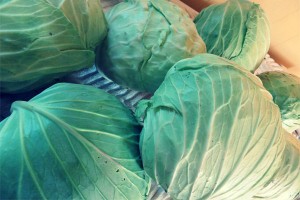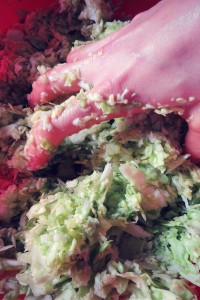When we consider ways to preserve food, canning, freezing and dehydrating come to mind. But fermentation, an ancient method of food preservation, is making a big comeback.
A year ago I had never heard of the sweet fermented tea called Kombucha. Then suddenly all of my Facebook friends were fermenting Kombucha in their home kitchens. One friend offered to share her Kombucha scoby (gel-like bacteria and yeast culture) with me, and teach me how to brew a batch of the trendy tea.

Fermented foods Kefir and heirloom sourdoughs are also trending, but people around the world have been preserving food with fermentation for thousands of years. Sauerkraut, kimchi and Bavarian yogurt are traditional fermented dishes that are highly prized in their regions of origin.
What is fermentation?
Fermentation is the process of transforming and subsequently preserving food via microorganisms. There are two basic categories of fermented food: wild and cultured. The transformation that occurs during wild fermentation depends on the food’s inherent microorganisms. Vegetable fermentation is an example of wild fermentation. The transformation that occurs during cultured fermentation relies on the introduction of a culture. Sourdough requires a starter culture and must be fed regularly.
Why it works
Preserving food by means of bacteria may seem unsafe at first glance, but the fermentation process produces a plethora of good bacteria that kills harmful bacteria. In vegetable fermentation, good bacteria eat natural sugars and produce acid that kills bad bacteria. Adding salt helps draw sugar out.
When you culture fresh milk into yogurt or cheese, good bacteria eat lactose and produce lactic acid that kills bad bacteria. Good bacteria are the driving force of fermentation, and the reason fermented foods are safe and nutritious!
Good bacteria are also good for the body
Good bacteria in our digestive systems help us process and absorb nutrients from the food we eat. Good bacteria also fight bad bacteria and viruses in our bodies, boosting our immunity.
How to make sauerkraut (fermented cabbage)
Every year I make a big batch of Sauerkraut to preserve my fall cabbage harvest. Sauerkraut is a great recipe to get started fermenting because it’s easy, safe and requires no special ingredients or equipment to make.
Step 1. Cut-out cabbage cores and set aside.
Step 2. Shred the cabbage and place it in very large bowl. Weigh the shredded cabbage.
Step 3. Add 1 Tbsp of salt to the bowl for every 2 lbs of cabbage. Massage the salt into the cabbage for 5-10 minutes to release juice. The juice will be your brine.
Step 4. Pack shredded cabbage into a crock or quart sized glass jars. Ensure the cabbage is completely covered by brine. Place a chunk of cabbage core at the top of the jar to keep the cabbage submerged and close the lid. If you are using a crock, place a plate on top of the cabbage and add weight before closing the lid.
Step 5. Store the kraut in a dark place at temperatures between 68-72 degrees Fahrenheit. After one week fermenting, remove the lid to check progress and release any built-up carbon dioxide. Wild fermentation takes two weeks to two months. Sample kraut until the taste and texture please you.
Step 6. When kraut meets your flavor preference, move it to the fridge or can it to halt the fermentation process.
Meet the next foodie!
Sign up for
Around the Table.
It's a FREE weekly e-newsletter all about food. Sign Up Today!

















